In the thrilling world of precision aerial displays, two iconic teams standout, each representing a different branch of the United States military. The Thunderbirds soar on behalf of the United States Air Force (USAF), while the Blue Angels take to the skies as ambassadors of the United States Navy and Marine Corps. Both teams captivate audiences with their breathtaking maneuvers and precise formations, but they have distinct identities and affiliations. Let’s delve into what makes these teams unique, from the aircraft they fly to their mission and history
The Thunderbirds are a spectacular aerial demonstration team representing the United States Air Force (USAF). They fly a type of aircraft called the F-16 Fighting Falcon, known for being really agile and speedy. These talented pilots showcase their skills at air shows and events worldwide. The Thunderbirds wear red, white, and blue, the colors of the American flag, which also happen to be the colors of their aircraft.
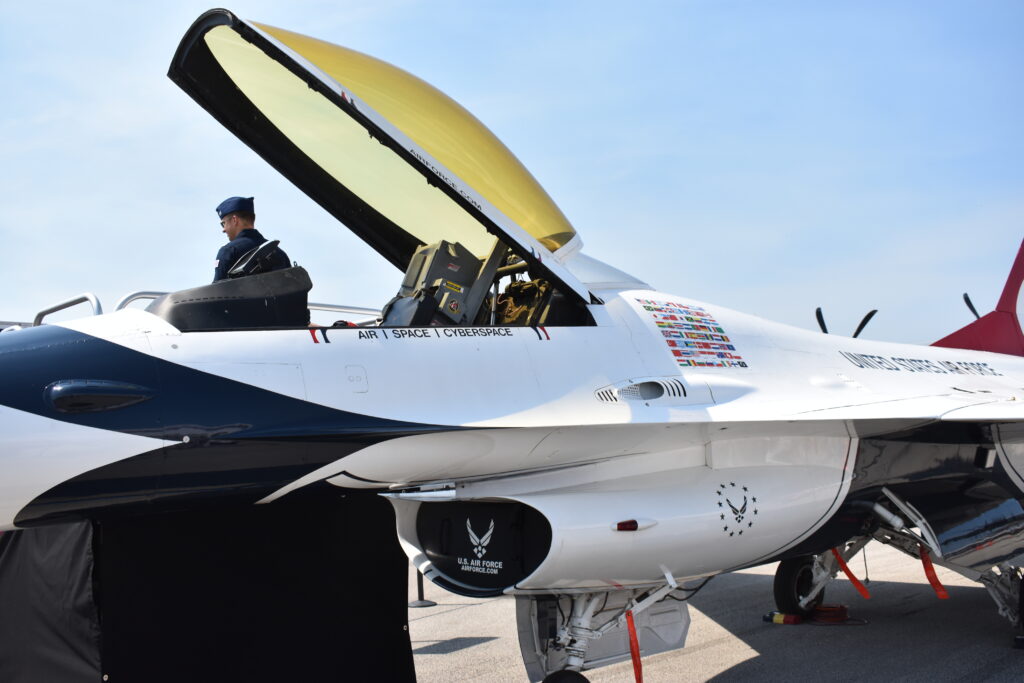
The Thunderbirds have been doing their incredible aerial shows since 1953, and their mission is all about demonstrating the USAF’s professionalism, capabilities, and skills to the public. They perform thrilling maneuvers like loops, rolls, and complex formations, leaving audiences in awe
Blue Angels is another awe-inspiring aerial team, but they’re associated with a different part of the U.S. military, the Navy and Marine Corps. The planes they fly are called F/A-18 Hornets, and these jets are known for being very fast and maneuverable. The Blue Angels are one of the oldest aerial demonstration teams globally, having been around since 1946. Their planes are painted in navy blue and yellow, giving them a unique look. Their main mission is to showcase the U.S. Navy, Marine Corps, and naval aviation while promoting patriotism.

The most important differences between these two teams are their military branches and the planes they fly. The Thunderbirds are from the Air Force and use F-16 Fighting Falcons, while the Blue Angels belong to the Navy and Marine Corps and fly F/A-18 Hornets. Another difference is their colors; the Thunderbirds use red, white, and blue, while the Blue Angels use navy blue and yellow. Also, the Blue Angels have been performing aerobatic displays for a bit longer, starting in 1946, while the Thunderbirds began in 1953. In essence, both teams are incredible at what they do, performing precise and thrilling aerial shows. But they represent different parts of the U.S. military and have their unique styles and histories. Both serve as impressive ambassadors, showing the public the skills and abilities of their respective military branches.
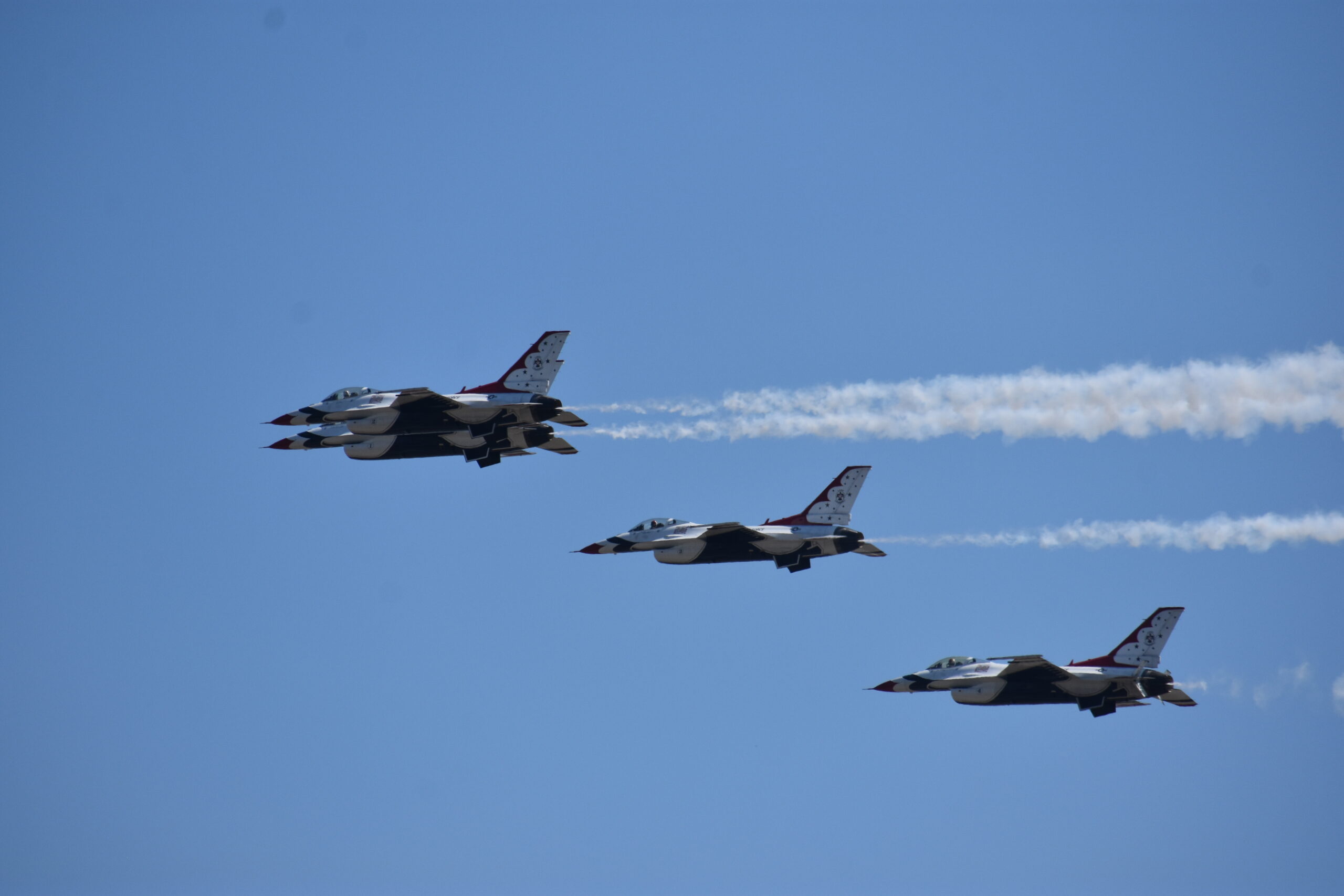
I have seen Blue Angels in Kennedy Space Center Airshow, which left me absolutely thrilled, and astonished, but today was my first encounter with Thunderbirds.
The day at the airshow began with a thrilling start as parachute jumpers took to the skies, setting the stage for the excitement that would follow.
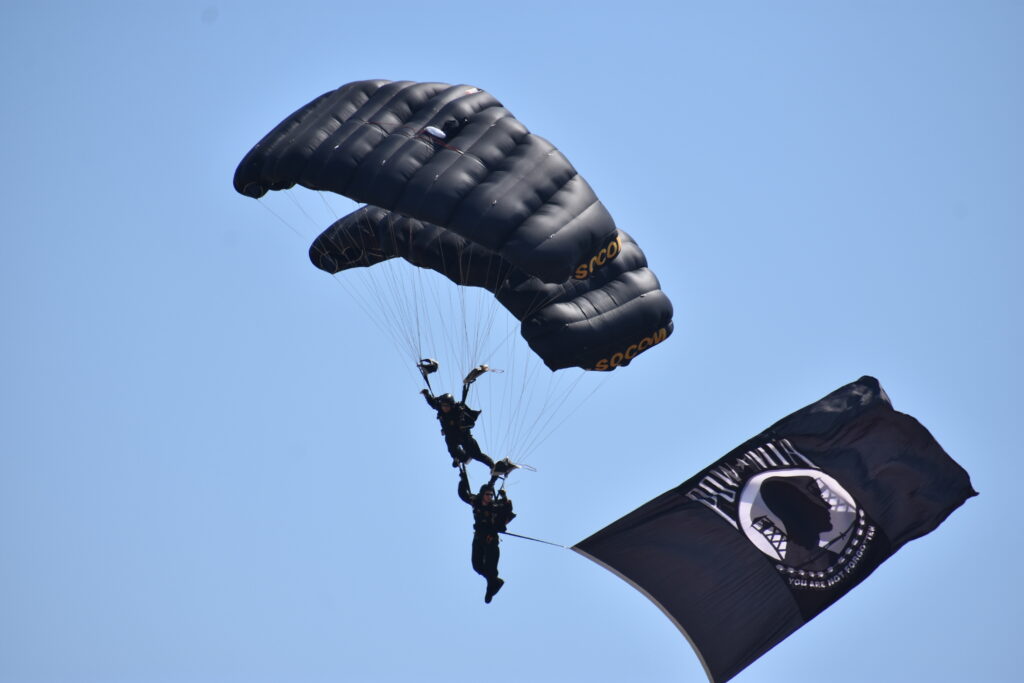
Their graceful descent from high above added an element of anticipation to the event. Little did we know that this breathtaking display of human flight was just the opening act. The Shockwave’s thunderous performance and the ground-shaking spectacle it created were still waiting to take our breath away, making it a day filled with unforgettable moments of aviation marvels and adrenaline-pumping experiences.
Following the parachute jumpers, aero acrobats took center stage, painting the sky with their mesmerizing maneuvers. Against the backdrop of endless blue, they danced with gravity, performing breathtaking loops, rolls, and spins. Their skill and precision left the audience in awe, setting the bar high for the thrills that would unfold throughout the day. These aero acrobats, were a testament to the boundless possibilities of aviation and the sheer talent of those who dare to defy gravity.

Next in line were the World War II planes, which provided a captivating glimpse into U.S. history. These vintage aircraft carried with them the echoes of a bygone era, reminding us of the bravery and sacrifices of those who served during that pivotal time. The sight and sound of these historic planes in flight were deeply impressive, conjuring images of aerial battles and heroic missions. It was a poignant reminder of the past and a tribute to the aviation legends who once soared through the same skies.
As the sun kissed the tarmac and a palpable buzz filled the air, I knew I was in for an extraordinary day at the Thunderbirds air show in Melbourne, Florida. The anticipation had been building for weeks, and as the first thunderous roar echoed across the sky, I felt a surge of excitement that would define this unforgettable experience.
Behind-the-Scenes Thrills
To add an unexpected twist at the airshow, I had the incredible opportunity to be right in the midst of the Shockwave’s roaring excitement.
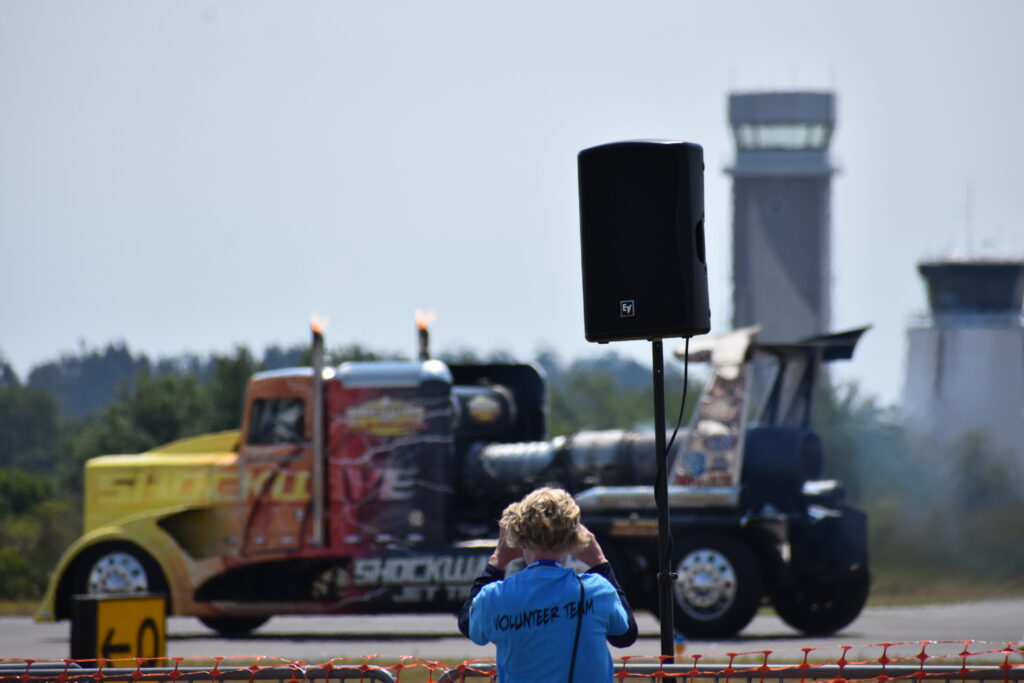
Shockwave truly unique jet truck. It’s equipped with multiple jet engines, typically three, that propel it forward with immense power. The combination of jet engines produces an awe-inspiring display of speed and fire. The Shockwave is famous for setting speed records at various events. It can reach speeds of over 300 miles per hour, making it one of the fastest vehicles on land. As the Shockwave races down the track, it creates an incredible spectacle of fire and smoke, adding to its appeal as a crowd-pleaser at air shows and races. As this jet-powered truck thundered down the track, the ground beneath us seemed to shake in response to its immense power.
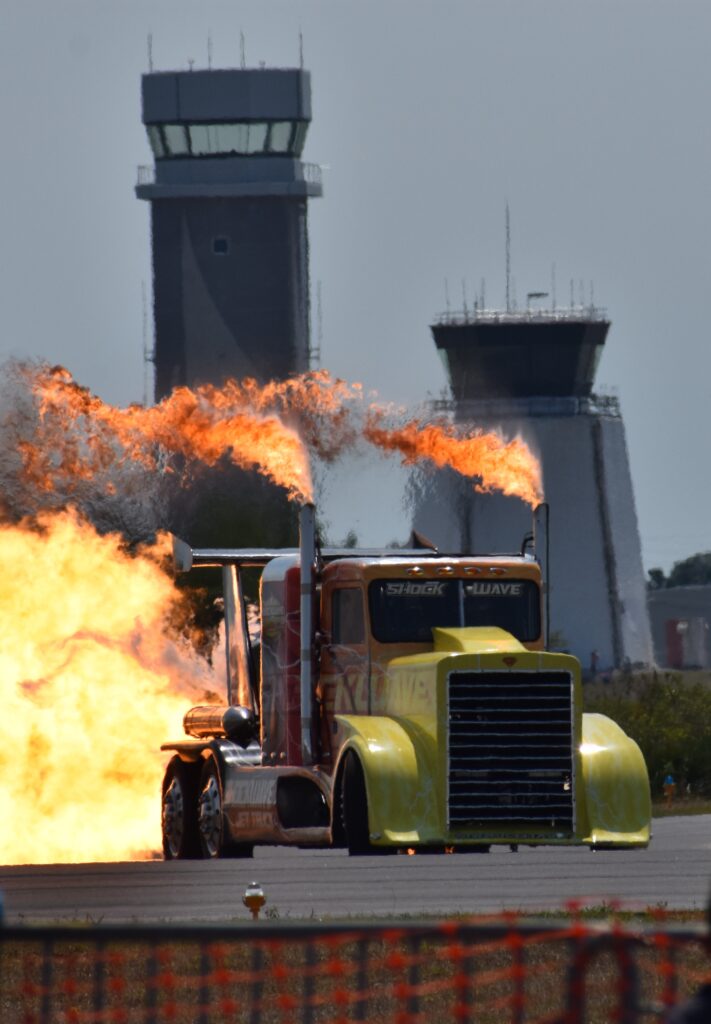
The sensation was electrifying; you could feel the vibrations coursing through the air, creating an atmosphere of pure adrenaline. The heat from the flames generated by the Shockwave’s jet engines was palpable, almost as if you could reach out and touch it. It was a sensory overload, a symphony of sound, vibration, and heat that left an indelible mark on the memory of that awe-inspiring day at the airshow.
But the Thunderbirds air show offered more than just breathtaking aerobatics. It provided an opportunity to delve into the world of aviation and military might.
The Air Force Hurricane Hunters was a revelation, a vehicle designed to penetrate the heart of a hurricane. It stood as a testament to human ingenuity and bravery, a tangible reminder of the lengths to which we go to understand and conquer the forces of nature.
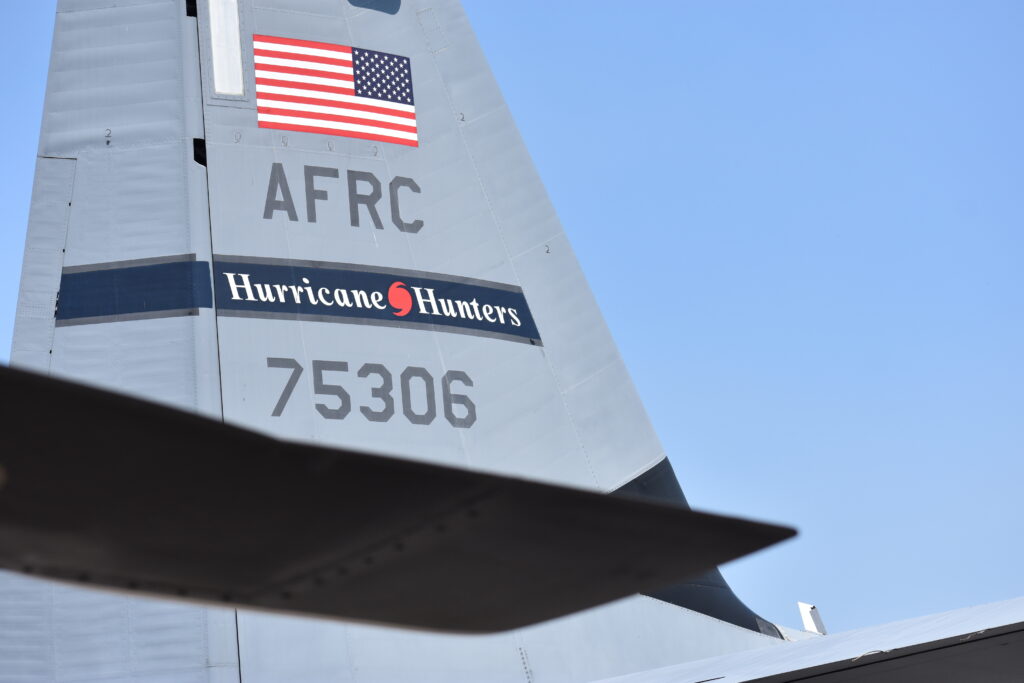
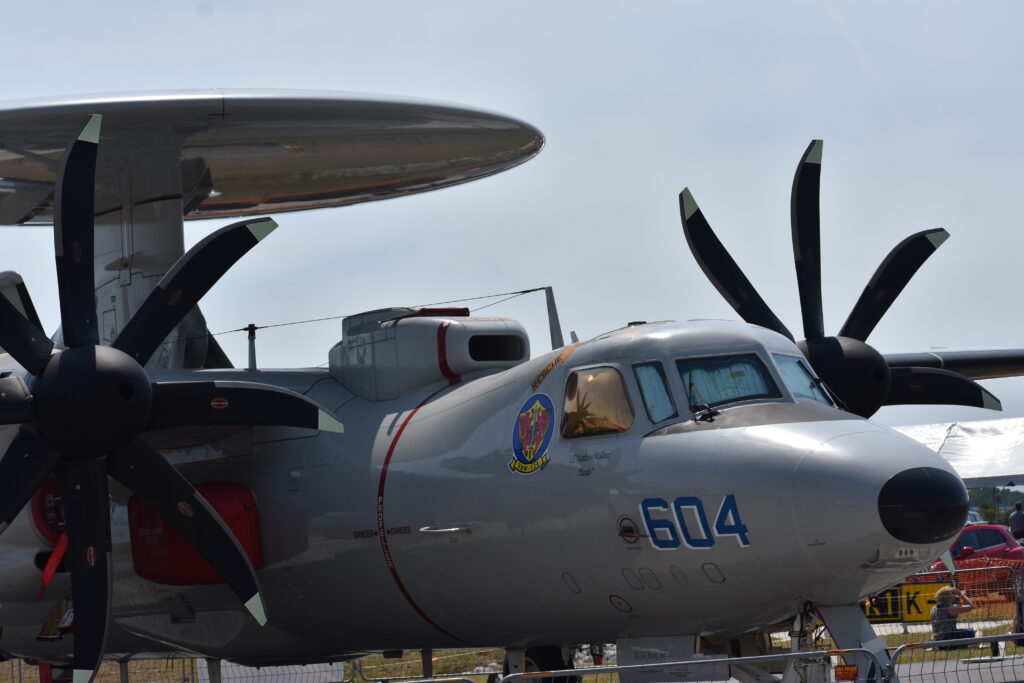
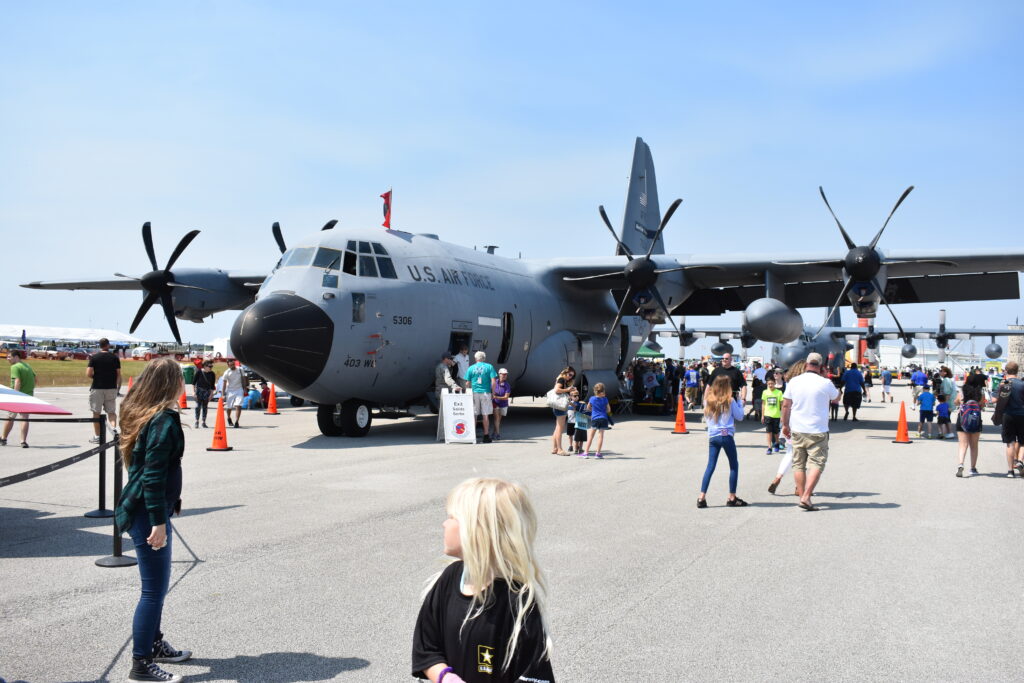
Getting up close with an F-16, Cargo C Planes, and helicopters was a highlight of the day. I was able to touch them feel them and try out pilot and gunner’s seats. I developed a much greater respect for these men and women who do these jobs. As I stood in the shadows of these formidable machines, I marveled at the technology and firepower it represents.
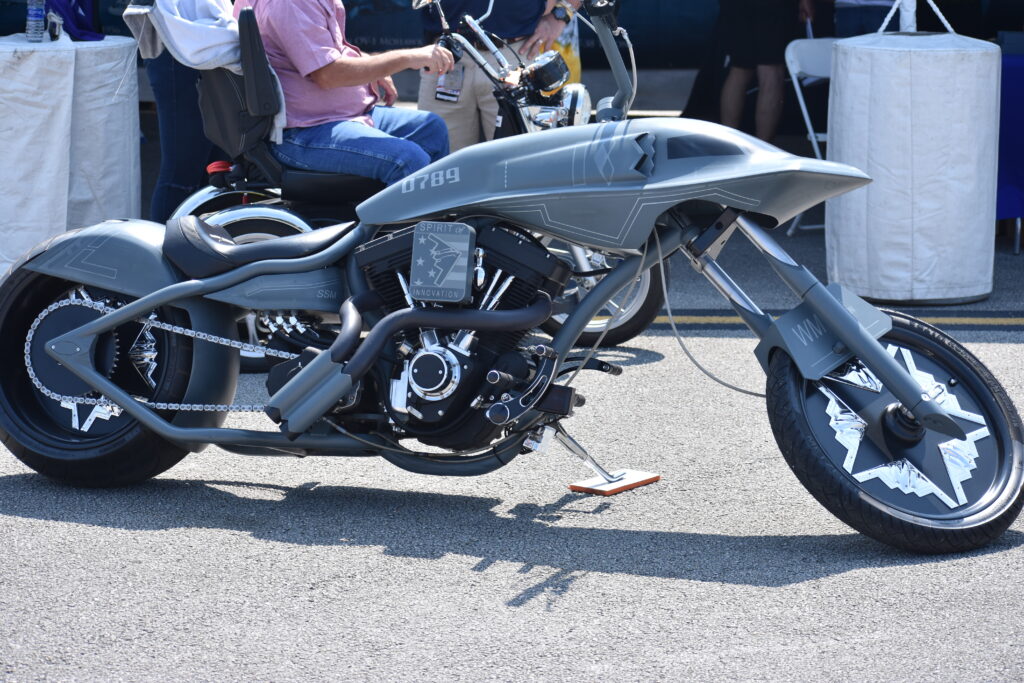
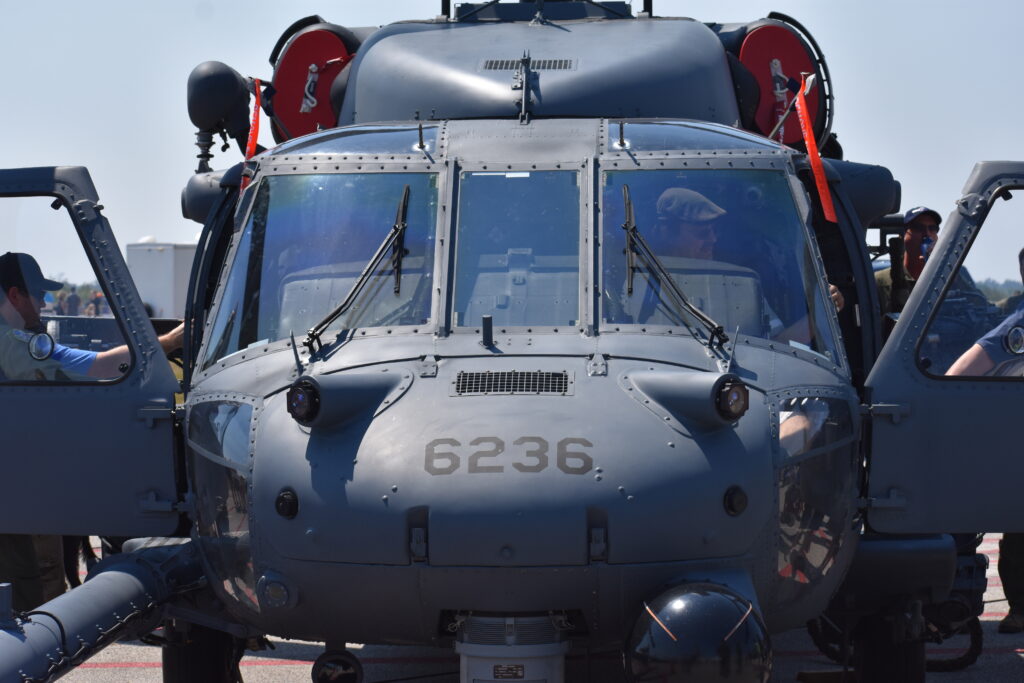
It’s a symbol of the dedication and courage of those who serve in our armed forces, a stark reminder of the sacrifices made to ensure our freedom.
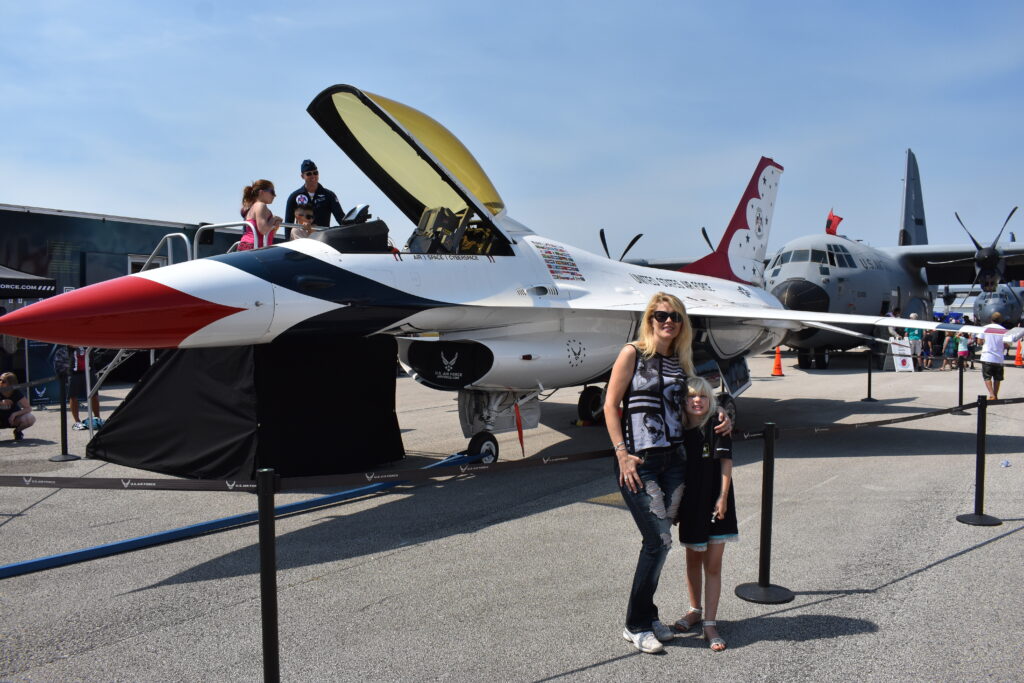
The Thunderbirds’ aerial show was nothing short of breathtaking; it felt like they appeared out of thin air at supersonic speeds, leaving the audience in awe. As they burst onto the scene, the deafening roar of their jet engines filled the air, causing shockwaves that seemed to ripple through the ground, sending vibrations to your very core. The sheer power and speed of these remarkable aircraft were simply mesmerizing.
The Thunderbirds wasted no time in showcasing their precision and skill. Flying in tight formations that seemed almost impossible, they moved as one, their aircraft dancing in the sky with grace and harmony. The formations they executed were a testament to the intense training and trust that existed among the pilots.
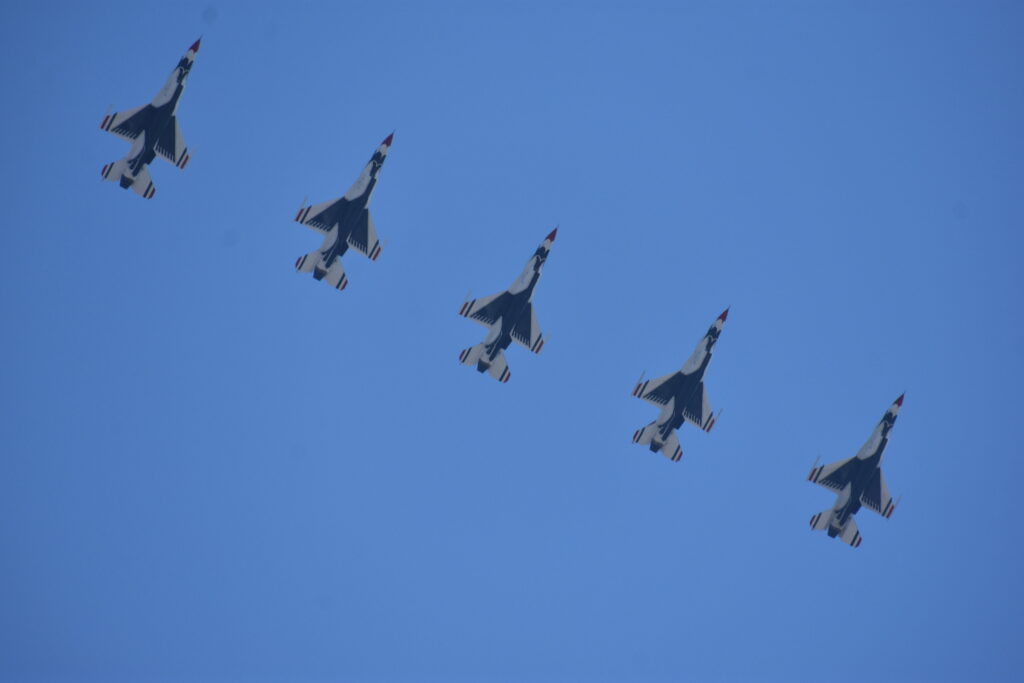
One of the most heart-pounding moments was when the Thunderbirds performed their daring tricks. They flew in close proximity, often just feet away from each other, at incredible speeds. It was a breathtaking display of nerve and control, as they weaved through the air with split-second precision. The sense of danger and excitement was palpable, and the audience collectively held its breath, watching in amazement.
The Thunderbirds’ show wasn’t just about speed and daring maneuvers; it was also a showcase of their ability to fly against each other within feet of separation. The synchronicity of their movements was mind-boggling, as they seemed to defy the laws of physics while maintaining such close proximity.
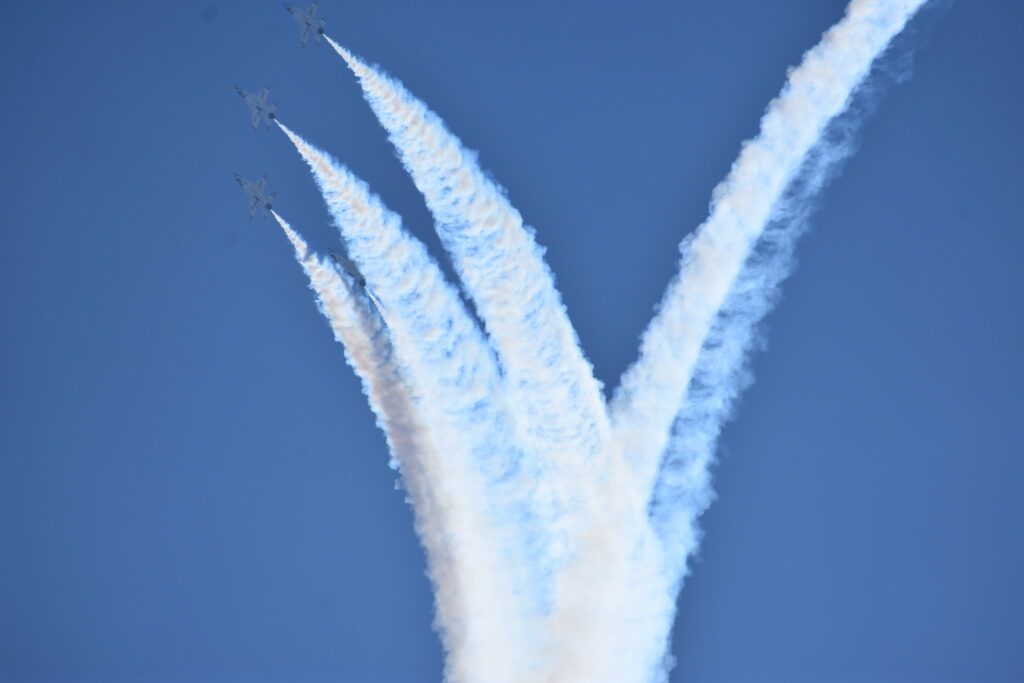
The shockwaves generated by their high-speed passes were not only felt in your knees but reverberated through the entire body, creating an unforgettable sensory experience. The combination of the thunderous sound, the rush of wind, and the spectacle unfolding above was a sensory overload that left an indelible mark.
As for the formations, they ranged from classic diamond formations, where the aircraft were aligned in a precise diamond shape, to breathtaking echelon formations, where they soared side by side, seemingly inches apart. The precision in maintaining these formations, even at supersonic speeds, was a testament to the pilots’ incredible skill and unwavering teamwork.
As the sun dipped below the horizon and the Thunderbirds bid their final farewell, I was left with a heart brimming with gratitude and awe. The Thunderbirds air show had given me a glimpse into a world of speed, power, and precision that few will ever experience. It was a day of sensory overload, where the thunder of jet engines and the brilliance of aerial acrobatics etched themselves into my memory.
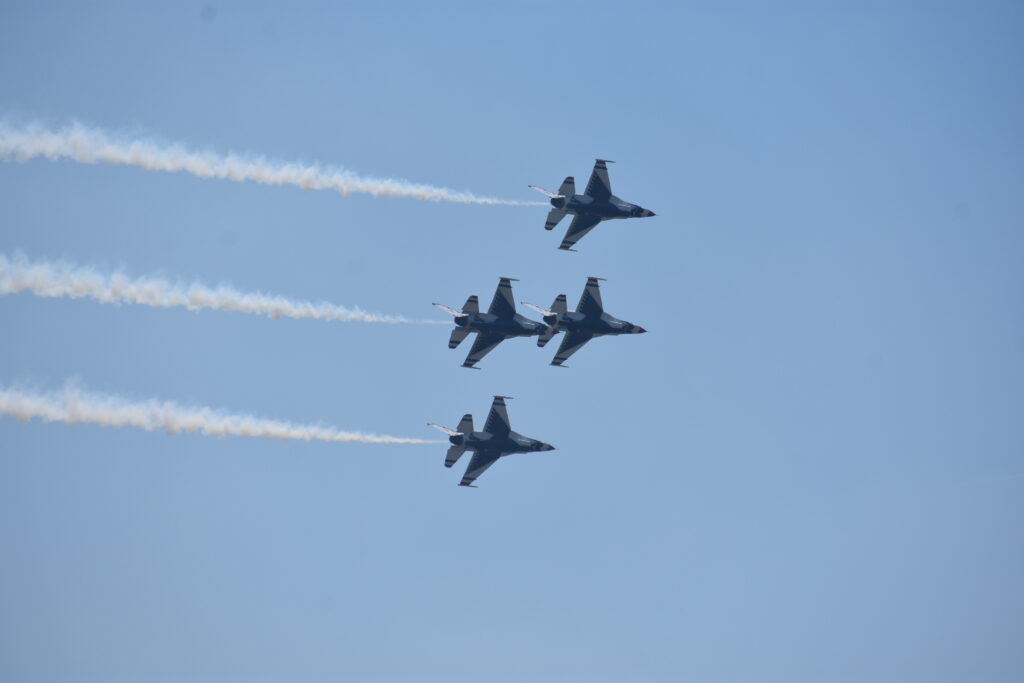

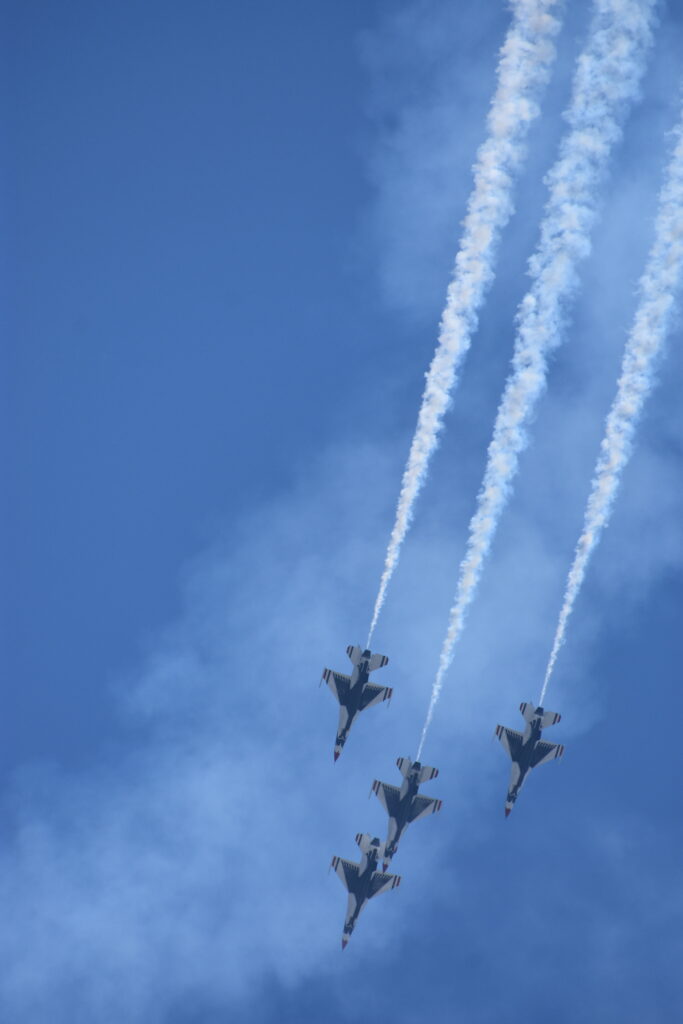
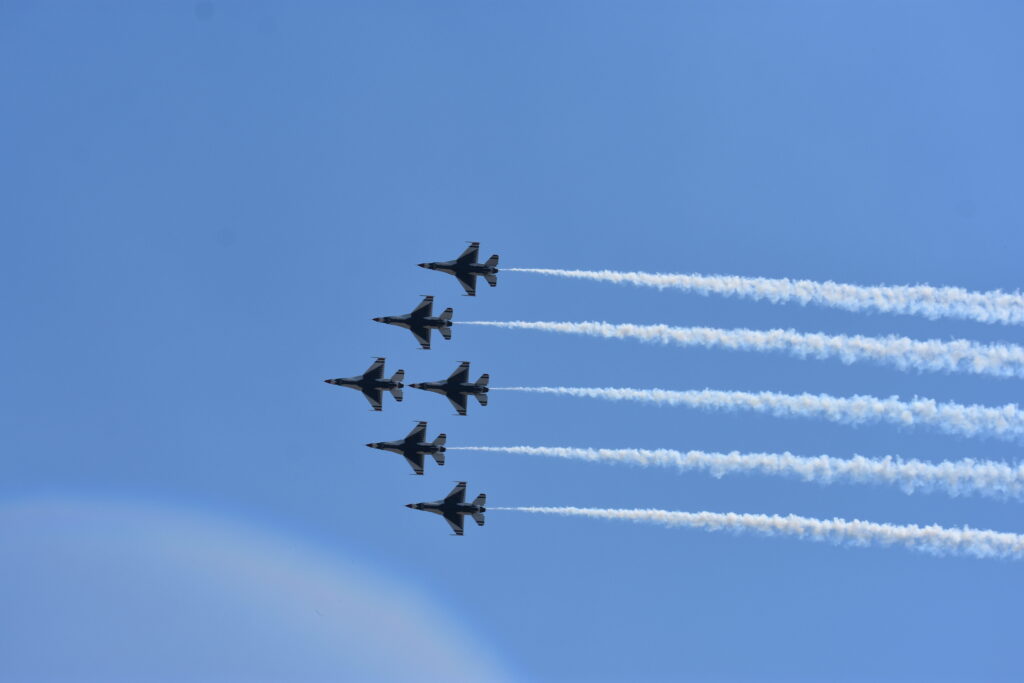
Leaving the Thunderbirds’ show, I was filled with an overwhelming sense of respect and admiration for the pilots and the military personnel who dedicate their lives to such extraordinary feats of aviation. Their skill, courage, and unwavering commitment to their craft left an indelible mark on my heart.
I couldn’t help but feel an immense sense of gratitude for their service to our nation. These remarkable individuals embody the spirit of dedication and sacrifice that defines the men and women of the armed forces. Their precision in the skies mirrors the discipline and excellence that characterize the military as a whole.
As I walked away from the airshow, I was profoundly proud to be an American. Witnessing the Thunderbirds’ incredible performance reminded me of the strength, resilience, and innovation that are at the core of our nation’s identity. It was a powerful reminder of the freedoms we enjoy and the individuals who safeguard them.
In those moments, as the echoes of the Thunderbirds’ thunderous display lingered in my memory, I couldn’t help but feel an immense sense of national pride. The show had left me with a deep appreciation for the dedication of those who serve in the military and a profound sense of honor for the privilege of being an American.
But beyond the spectacle, the Thunderbirds air show left me with a deep appreciation for the dedication and sacrifice of the men and women who serve in our armed forces. It reminded me that freedom comes at a price, and that price is paid by those who stand ready to defend it.






